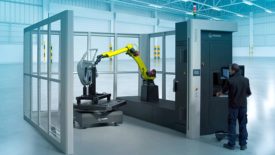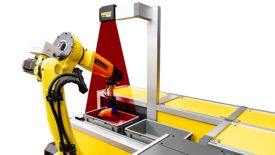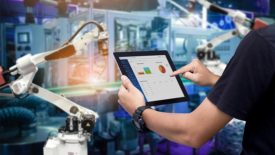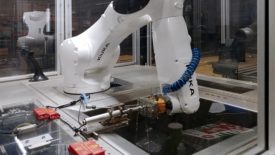Featured on Home Page
Software & Analysis
From addressing labor shortages, to reducing human error, the future looks bright for quality inspection software.
Read More
Test & Inspection
Quality Automation: The Role Robotics and Sensors Play in Quality Control and Production
Manufacturers looking to improve their production process efficiency and effectiveness should look closely at Quality Automation.
May 8, 2023
Vision & Sensors | Machine Vision 101
Image Processing for Machine Vision – How Did We Get Here?
Machine Learning (ML) has been part of machine vision image processing almost from the beginning.
May 4, 2023
Vision & Sensors | Vision
40+ Years of Vision Guided Robotics
VGR is one of the largest growing sectors in both the robotics and machine vision market.
May 3, 2023
Vision & Sensors | Deep Learning
Can Deep Learning Improve My Manufacturing Process?
By applying DL with a Data-Centric Approach, Users Can Streamline Even the Most Challenging Manufacturing Steps with Fast, Accurate Automated Inspection.
May 2, 2023
Inaugural Quality Rookie of the Year Winner
2023 Quality Rookie of the Year: Jared Curtis, Time for a Challenge
Our Rookie of the Year had twenty years of experience when he decided to switch careers.
May 1, 2023
Quality in Automation | Quality 4.0
Time for Quality 4.0
Changes in industry are taking place now.
April 20, 2023
Quality in Automation | Robotics
Automated Robotics Are Just Getting Started
These machines are only gaining favor post pandemic.
April 19, 2023
Speaking of Quality | Jim Spichiger
Accomplishments Build on One Another
Professional credentials led me to push myself further.
April 18, 2023
Column | Darryl Seland
From the Editor: Iterations
From manufacturing to personal growth.
April 17, 2023
Stay in the know with Quality’s comprehensive coverage of
the manufacturing and metrology industries.
eNewsletter | Website | eMagazine
JOIN TODAY!Copyright ©2024. All Rights Reserved BNP Media.
Design, CMS, Hosting & Web Development :: ePublishing













